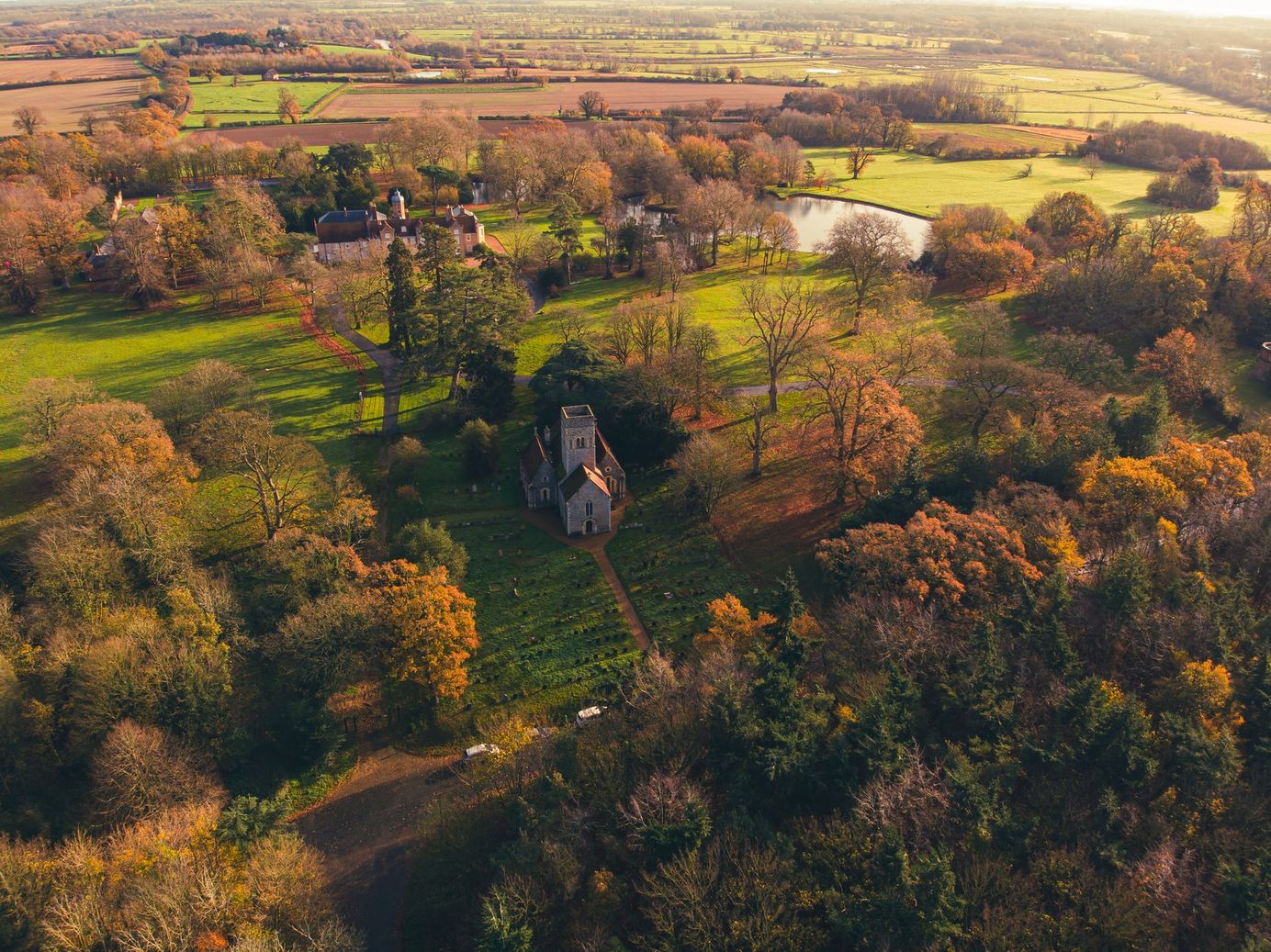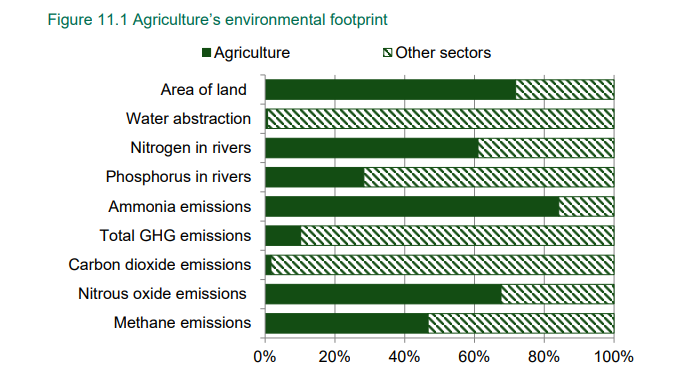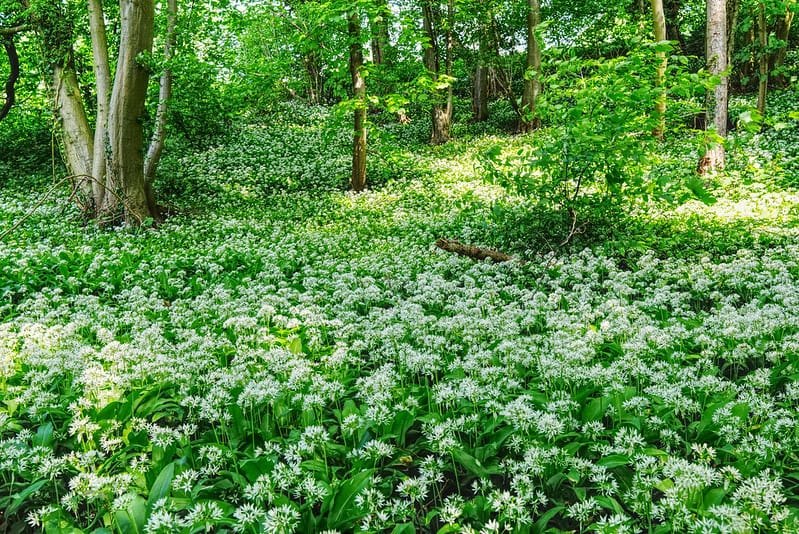
Biodiversity Rules & Cottagecore Clothes
The latest news on nature and conservation in Britain.
To receive our digest of the week's nature news in your inbox every Friday, sign up here. A monthly donation helps to support our journalism.
National news
Net gain | Scientists claim that the government’s new rules on biodiversity net gain – designed to allow development without an overall reduction in nature – are easy to manipulate and difficult to enforce. The central problem is that habitats will be destroyed now, based on the promise that compensatory habitat will be created and maintained over the next 30 years, reports the Times. These may include gardens, even though developers cannot guarantee how these will be managed. The government refuted the claims, saying that the new Biodiversity Metric would ensure the integrity of the system – although the Guardian took aim at the tool itself in the week before.
Grasslands | Three charities – the Bumblebee Conservation Trust, Butterfly Conservation and Plantlife – have joined forces to persuade the UK government to make grasslands and meadows a priority at the COP26 conference in Glasgow this November. The coalition, known as Grasslands+, points out that 30% of the earth’s carbon is stored in grassland sinks, meaning that they are “every bit as important as forests and other ecosystems in the fight against greenhouse gases.” The website points out that the UK has lost 97% of its meadows and other species-rich grasslands over the last 100 years. The Independent covered the story. In a separate campaign, charities have written to the government urging it to extend the UK’s hedgerow network by 40% by 2050 to support nature restoration and climate change efforts.
Forestry | Scottish Forestry plans to tackle climate change by reducing ploughing of peat soils. Under new measures, which come into force in October, the agency will refuse any Forestry Grant Scheme application that includes ploughing soils where the peat is more than 10cm deep, compared to the current limit of 50cm. The new guidance is based on research showing that these soils are critical in sequestering carbon. “Given the importance of woodland creation in achieving Net-Zero by 2045, the action is being taken to prevent unnecessary emissions,” the agency said in a press release.
In other news:
- Police have launched an appeal after a goshawk was illegally shot dead in public woodlands, reports the Independent.
- The government has awarded £40m in grants to 90 nature-based projects through its Green Recovery Challenge Fund.
- The slate landscape of north-west Wales has been granted World Heritage status by UNESCO, reports the Shropshire Star.
- There has been a post-lockdown rise in the harassment of dolphins, reports the BBC.
- Scientists have filmed the “sexy secret life” of basking sharks in the Hebrides, reports the Guardian.
Across the country
Sandringham | Prince Charles joined Tony Juniper, chair of Natural England, in releasing a clutch of curlews on the Sandringham Estate in Norfolk. The eggs had been collected from airfields, where nesting curlews pose a serious risk to safety. More than 80 chicks will be released in total, including at the neighbouring estate, Wild Ken Hill. The news was covered by the BBC and Eastern Daily Press. The monarchy also generated some negative attention concerning the environment this week: according to an investigation in the Guardian, the Queen’s lawyers secretly lobbied Scottish ministers to change a draft law to exempt her private land from an initiative to cut carbon emissions. The Scottish Greens called it an “affront to democracy”.
Wester Ross | A dramatic rescue took place in the Highlands this week, when a bird sanctuary island caught fire, putting its avian residents at risk. More than 40 people from the village of Shieldaig, around a quarter of a mile away on the mainland, raced out on their boats with buckets, forming a human chain to douse the flames. According to the Scotsman, which reported on the drama, Shieldaig Island is home to kestrels, owls, herons and sea eagles. The fire is thought to have been caused by a camper.
Some complete plank has camped on Shieldaig Island and has lit a fire. This may end up very badly... It hasn't rained for 3 weeks. pic.twitter.com/paA6FysZso
— Steve Carter (@HighlandRampage) July 24, 2021
Aberconwy | In the village of Llanrhos, North Wales, an ecological debate is brewing around how to bury the dead. With cemeteries approaching full capacity, the council must decide whether to extend one of the sites – but residents are concerned that it would eat into the existing landscape. The village reverend said that he didn’t believe that the extension would come at a cost to biodiversity. “If you were planning a housing estate then I might understand, but a cemetery can be a good ecological place that promotes local birds, insects and wildflowers,” he said. North Wales Pioneer covered the controversy. In another Welsh village, the council turned down a proposal for a natural burial site, reports WalesOnline.
Elsewhere:
- Thousands of conifers in Swansea are set to be replaced with native broadleaf trees, reports WalesOnline.
- Trees will soon be cleared alongside a Solihull road to make way for HS2, reports the Birmingham Mail.
- A coal mining remediation company has been fined almost £30,000 for repeated pollution of the River Cynon, following prosecution by Natural Resources Wales.
- Network Rail has constructed a “beaver pass” under the mainland in the Highlands, reports the Scotsman.
- The UK has its first ever bison rangers, thanks to a project aiming to reintroduce bison to a woodland in Kent, reports the BBC.
- Volunteers have covered the coalfield sites of East Ayrshire in native wildflower seeds, reports the Herald.
- The New Forest National Park Authority has received a £100,000 grant to investigate ways of combating climate change, including identifying areas where low-quality grassland could be turned into woodlands, reports the Daily Echo.
- The Isle of Man has outlined a five-year plan for dealing with climate change, including ocean-based carbon storage, reports the BBC.
- Work to restore the lower Otter river valley to a more natural state is now underway, according to the Environment Agency.
- A number of animals have died after a pond in Liverpool was polluted, reports the Liverpool Echo.
- Nottinghamshire County Council has refused an application to extend the time allowed to restore a shale gas exploratory drilling site near a Wildlife Trust nature reserve.
- The northern pool frog, England’s rarest amphibian, has been returned to a Breckland nature reserve, reports the Eastern Daily Press.
- A 10-mile stretch of Cheshire’s countryside is to be restored by conservationists from Chester Zoo, reports the BBC.
Reports
Peatland | Scientists and Scottish government agencies have teamed up for this latest piece of research into the movement of bogs. Together, they have developed a method to map the “breath” of the land, using satellite technology. According to co-author David Large, it allows us “to see what we would not ordinarily be able to with the naked eye.” In the long run, the findings could have important implications for the understanding and restoration of peatlands across Scotland, helping to provide better estimates of the amount of carbon that they store. The findings were covered in the Scotsman and the Herald.
Statistics | The government has published two new sets of statistics. The first, on agriculture in 2020, outlines the state of the industry, including information on soils, pesticides, biodiversity and greenhouse gases. A helpful graph shows the impacts of agriculture on the environment in comparison to other sectors in the UK.

Meanwhile, the government has released the results of a huge citizen science project, documenting the experiences of sea anglers in the UK. The statistics show that anglers caught between 43 and 46 million fish in 2018 and 2019, but that around 80% of these were released, and that “conservation is becoming more of a feature of sea angling”.
Forestry | The Forestry Commission has published a series of public opinion surveys, covering England and the UK, Scotland and Wales. Although each survey was framed differently, all three indicate strong public support for more trees or woodlands: 63% of respondents in Scotland wanted more woodland where they live; 82% of respondents in England thought more trees should be planted to address climate change; and over half of respondents in Wales want public funding for urban trees and accessible woodland. In response to the results for Scotland, environment minister Màiri McAllan said “Given our ambition to become Net Zero by 2045, it is especially good to see such strong support for tree planting as a means to tackling climate change.”
Science
Health | A study published in the journal Nature Sustainability has found that higher daily exposure to woodland – but not grassland – improves cognitive development and mental health among adolescents. The researchers examined data for 3,600 young people across London, adjusting for variables such as socioeconomic background. The researchers suggested that the plethora of sensory experiences in woodlands was one explanation for their findings, adding that the knowledge could be useful for urban planning. IFLScience covered the study.
Fungi | Scientists report in the journal PLOS Biology that they have succeeded in visually tracking, in real time, the colonisation of plant roots by mycorrhizal fungi — a 400 million-year-old process that has never been witnessed until now. To achieve this, the scientists genetically engineered plants to produce a highly visible pigment when they came into contact with the fungi. According to a University of Cambridge press release, the research could pay dividends for the environment and agricultural productivity: “If plants can take up more nutrients naturally, this will reduce the need for artificial fertilisers – saving money and reducing associated water pollution.” The Shropshire Star covered the study.
Botany | The Botanical Society of Britain & Ireland has published its latest collection of papers, including several studies with implications for botanical conservation. Subjects include the near-extinction of the Scottish orange-flowered hawkweed, and a refutation of the first record of Veronica filiformis in the wild: “Once it is rejected, the history of V. filiformis in Britain and Ireland becomes much more straightforward,” writes the author.
Driftwood
Fashion | If you like the countryside and fashion, and have an awful lot of money, then you’re in luck: according to Vogue, landscape-themed clothes are all the rage this year. Some of the outfits pictured are… astonishing. “Think of this as the more literal endpoint of cottagecore,” writes journalist Rosalind Jana. “Why dress like you’re hoping to waft around a meadow of wildflowers when you could just wear the meadow instead?”
History | The history of the Great North Wood, in London, is unwrapped in a lovely essay by C. J. Schüler, who is publishing a book on this very topic in October. He details the Victorian tomes in which the history of this woodland is recorded. While it once stretched across South London, “the haunt of smugglers, gypsies and charcoal burners”, only a fragment remains today, but what remains is beloved of the nature writers who live nearby.
Writing | Nature writer Robert Macfarlane appeared on Desert Island Discs this week to talk about his favourite music. You can listen to the recording here – though you can find out all the spoilers in the BBC’s summary. He touches upon subjects including mountains, a formative encounter with Seamus Heaney, and the role of nature in children’s education.
Further reading:
- The Spectator reviews the Trees A Crowd podcast, which explores the native trees of the British Isles.
- Rewilding Britain has released an illustrated (and animated!) guide to what rewilding looks like in practice.
- Positive.News explores what it means to rewild education.
- BBC Future looks at how buildings can be made more accommodating to wildlife.
- The Guardian has given garden weeds the pass notes treatment.
- The Canary has a feature on the mass trespass that took place near Brighton on the weekend. The New Statesman also has a feature on trespassing.
- The Guardian has two features on insects this week: on the negative impacts on the beekeeping boom, and a piece by Dave Goulson on the vital need for insects in the face of disastrous declines.
- A new project is seeking a virtual choir, which will sing “songs for the Anthropocene”. Join in here.
Happy days
Music | To celebrate its quatercentenary, Oxford Botanic Garden has released a magical track combining birdsong, violin performance and poetry, in what it describes as a three-way conversation. A blogpost explains: “Male blackbirds start singing in late winter. At first they practice a series of subsongs, which they edit and combine into a complex final melody. Alice Oswald's rhapsody observes the same structure.” But the only way to really appreciate it is to listen – it’s the last track on the page.
Inkcap is 100% reader-funded. If you value independent environmental journalism, please consider supporting Inkcap by becoming a paid subscriber.

Subscribe to our newsletter
Members receive our premium weekly digest of nature news from across Britain.
Comments
Sign in or become a Inkcap Journal member to join the conversation.
Just enter your email below to get a log in link.








